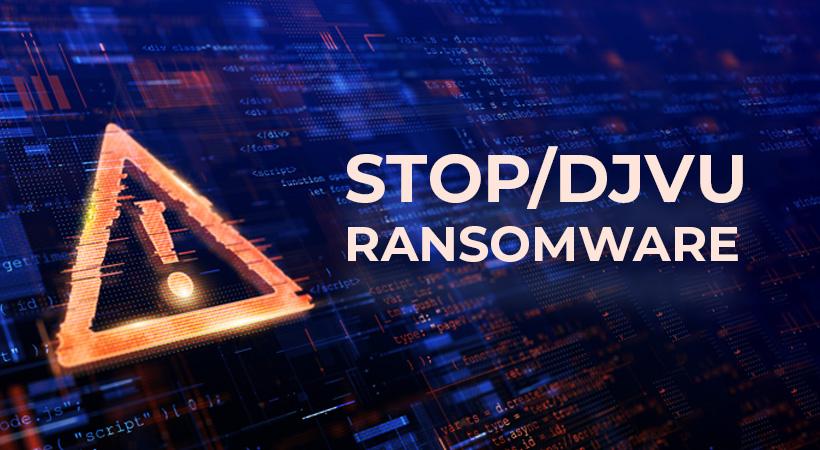Ransomware is a type of malicious software (malware) designed to block access to a computer system or its data, typically by encrypting files, until a ransom is paid by the victim. It has evolved into one of the most prevalent and dangerous forms of cyber threats, causing significant damage to individuals, businesses, and even governments. The attacker usually demands payment, often in cryptocurrency, promising to restore access to the encrypted data once the ransom is paid. However, there is no guarantee that paying the ransom will resolve the issue, as the attacker may refuse to decrypt the files or demand additional payments.
One of the latest and highly concerning ransomware threats is the Fioi ransomware, a malware that encrypts victims’ files and demands ransom to release them. Below, we explore the specifics of this malware, its functionality, the damage it causes, and how to remove it from an infected system.
Remove annoying malware threats like this one in seconds!
Scan Your Computer for Free with Spyhunter
Download Spyhunter now, and scan your computer for this and other cybersecurity threats for free now!
The Threat: Fioi Ransomware Overview
The Fioi ransomware is part of the notorious STOP/Djvu ransomware family. This ransomware specifically targets users' files, encrypting them and making them inaccessible without a unique decryption key, which is only available by paying the ransom. Like other ransomware variants, Fioi uses sophisticated encryption algorithms to prevent users from opening or accessing their files.
After infiltrating a system, Fioi ransomware adds the .fioi extension to all encrypted files. For example, a file named "document.docx" would be renamed to "document.docx.fioi" after encryption. The ransomware typically spreads through malicious email attachments, pirated software downloads, cracked software activators, or by exploiting system vulnerabilities.
How Fioi Ransomware Installs and Functions
Fioi ransomware typically gets installed when users unknowingly download and run malicious files from the internet. Cybercriminals use deceptive tactics to trick users into clicking on infected links, opening malicious email attachments, or downloading compromised software. Some of the most common ways Fioi infiltrates systems include:
- Phishing Emails: The malware is often distributed via phishing emails, which are designed to look like legitimate communications. The email may contain a malicious attachment or a link that leads to a malicious website.
- Malicious Software and Cracks: Fioi often disguises itself as a crack or keygen for paid software, tricking users who download pirated versions of software.
- Infected Websites: Visiting compromised or malicious websites can result in automatic ransomware downloads, especially if the system lacks updated security patches.
Once installed, Fioi ransomware performs the following actions:
- Encryption of Files: The ransomware scans the infected system for important files such as documents, images, videos, and archives, and encrypts them using a robust encryption algorithm. Files are renamed with the “.fioi” extension, making them inaccessible.
- Dropping the Ransom Note: After encryption, a ransom note titled "_readme.txt" is created and placed in every folder where files have been encrypted. The note informs the victim of the encryption, provides instructions for payment (usually in Bitcoin), and threatens permanent data loss if the ransom is not paid within a specific timeframe.
- Extortion: The ransom note typically demands a payment of $980 but offers a discount (usually 50%) if the victim contacts the attackers within 72 hours.
Example of Fioi Ransom Note
Here are the contents of the ransom note left by Fioi ransomware:
::: Greetings :::
Little FAQ:
.1.
Q: Whats Happen?
A: Your files have been encrypted. The file structure was not damaged, we did everything possible so that this could not happen.
.2.
Q: How to recover files?
A: If you wish to decrypt your files you will need to pay us.
.3.
Q: What about guarantees?
A: Its just a business. We absolutely do not care about you and your deals, except getting benefits. If we do not do our work and liabilities - nobody will cooperate with us. Its not in our interests.
To check the ability of returning files, you can send to us any 2 files with SIMPLE extensions(jpg,xls,doc, etc... not databases!) and low sizes(max 1 mb), we will decrypt them and send back to you. That is our guarantee.
.4.
Q: How to contact with you?
A: You can write us to our mailboxes: help24dec@aol.com or help24dec@cyberfear.com
.5.
Q: How will the decryption process proceed after payment?
A: After payment we will send to you our scanner-decoder program and detailed instructions for use. With this program you will be able to decrypt all your encrypted files.
.6.
Q: If I don t want to pay bad people like you?
A: If you will not cooperate with our service - for us, its does not matter. But you will lose your time and data, cause only we have the private key. In practice - time is much more valuable than money.
:::BEWARE:::
DON'T try to change encrypted files by yourself!
If you will try to use any third party software for restoring your data or antivirus solutions - please make a backup for all encrypted files!
Any changes in encrypted files may entail damage of the private key and, as result, the loss all data.
Purpose of Ransomware and the Threat It Poses
Ransomware, including Fioi, primarily aims to extort money from the victim by holding their files hostage. Once Fioi ransomware encrypts the files, the user faces two difficult choices: pay the ransom or lose access to their files forever. Even if the victim pays, there is no guarantee that the attackers will honor their promise to provide the decryption tool.
The damage Fioi causes is twofold:
- Loss of Data: Encrypted files are inaccessible, potentially leading to the loss of valuable personal or business data.
- Financial Loss: If victims choose to pay the ransom, they can suffer a significant financial loss, with no assurance of data recovery.
Symptoms of Fioi Ransomware Infection
Detecting a Fioi ransomware infection can be straightforward based on certain symptoms:
- File extensions change to .fioi: Files previously usable are now appended with the ".fioi" extension.
- Ransom note appears: A text file titled "_readme.txt" will be in several directories on the system, explaining the ransom demand.
- Inaccessible files: Attempting to open affected files will result in error messages stating that the file format is not supported or is corrupted.
- System slowdown: As the ransomware runs encryption routines, the system may experience significant slowdowns due to high CPU and disk usage.
Detection Names
Different anti-malware tools may label Fioi ransomware under various names. Here are a few common detection names:
- Trojan.Ransom.STOP
- Ransom:Win32/StopCrypt!ml
- Trojan:Win32/Occamy.C
- Trojan:Script/Oneeva.A!ml
Similar Ransomware Threats
Fioi is part of the STOP/Djvu ransomware family, so similar variants include:
- Nlah ransomware
- Pezi ransomware
- Maql ransomware
- Nbes ransomware
All these variants follow a similar attack pattern, encrypting files and demanding a ransom.
Comprehensive Removal Guide for Fioi Ransomware
Remove annoying malware threats like this one in seconds!
Scan Your Computer for Free with Spyhunter
Download Spyhunter now, and scan your computer for this and other cybersecurity threats for free now!
Step 1: Disconnect from the Internet
Immediately disconnect the infected computer from the internet to prevent further communication with the attacker’s server. This can halt the encryption process.
Step 2: Enter Safe Mode
- Restart the computer and repeatedly press the F8 key before the Windows logo appears.
- From the options, select Safe Mode with Networking.
Step 3: Use an Anti-Malware Tool (SpyHunter)
Download and install a reputable anti-malware tool, such as SpyHunter:
- Go to this page and download the tool.
- Follow the on-screen instructions to install it on your system.
- Run a full system scan to detect and remove Fioi ransomware.
Step 4: Remove Suspicious Programs
- Open Control Panel, navigate to Programs, and uninstall any suspicious or recently installed software.
Step 5: Delete Temporary Files
- Press Windows + R, type %Temp%, and hit Enter. Delete all temporary files in this folder to remove any remnants of the ransomware.
Step 6: Restore Files
If you have backups of your files, restore them from an external drive or cloud storage. However, do not connect to the infected computer until it has been completely cleaned.
Step 7: Use Decryption Tools
Check for legitimate decryption tools. The Emsisoft Decryption Tool may be able to recover some files encrypted by STOP/Djvu variants like Fioi.
Prevention Tips for Avoiding Ransomware Infections
- Keep Software Updated: Regularly update your operating system and software to patch vulnerabilities.
- Use Strong Passwords: Implement strong, unique passwords for accounts and systems.
- Install Antivirus Software: Ensure you have a reputable antivirus program, like SpyHunter, to detect malware before it can infect your system.
- Backup Files Regularly: Keep backups of your data in a secure, isolated location, such as an external drive or cloud storage.
- Be Cautious Online: Avoid downloading software from unknown sources, and don’t click on suspicious email links or attachments.
Conclusion: Protecting Yourself from Fioi Ransomware
Fioi ransomware is a serious threat that can cause significant data loss and financial damage. By following the removal guide and taking proactive steps, such as installing anti-malware software and backing up your files, you can protect yourself from ransomware and recover in case of an attack. Download SpyHunter and perform a free scan of your system to detect and remove Fioi ransomware effectively.





